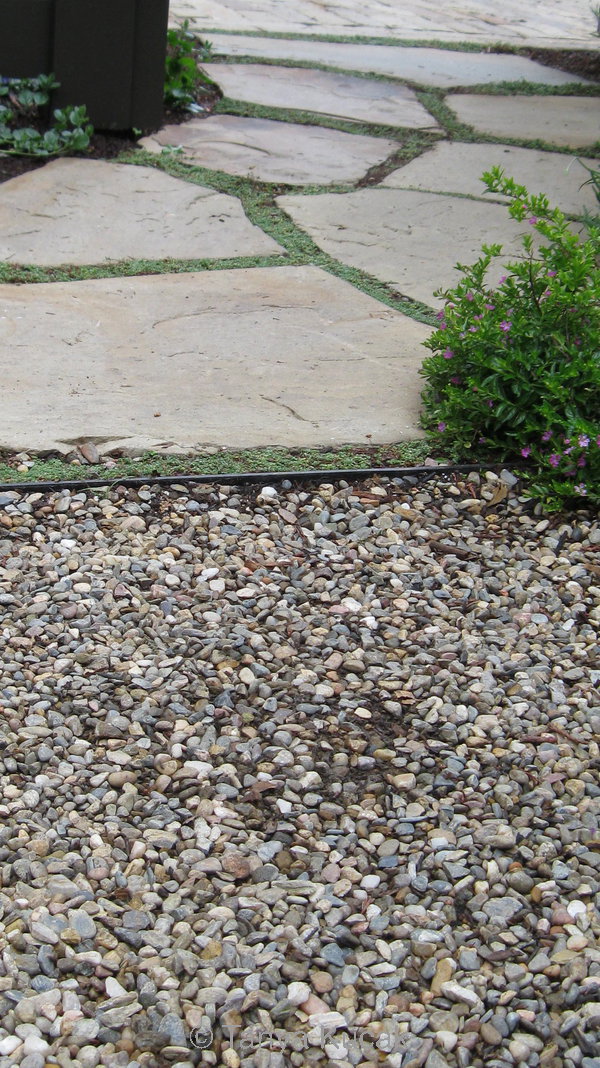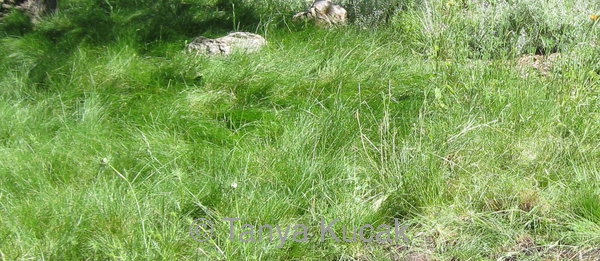
What difference would it make if you replaced a traditional front lawn with a sustainable front yard?
A decade ago, the city of Santa Monica decided to find out. The garden\garden study took 2 adjacent bungalows in an urban residential neighborhood and built a new landscape for each. One bungalow got a traditional front yard with a lawn that was regularly mowed, fertilized, and watered; the other bungalow got a sustainable front yard with California native plants, permeable paving, and drip irrigation. Starting in March 2004, all the inputs were tracked, including water usage and maintenance costs. The outputs, in the form of green waste that had to be hauled away, were also tracked.
The latest report summarized data from 2004 to 2013. Over the first nine years of the study, the sustainable yard used 18% as much water, required 31% as much maintenance labor, and generated 44% as much green waste, compared to the traditional yard.
If you are considering a lawn replacement, those savings in water use, garden maintenance, and waste-hauling fees quickly add up and can make a sustainable landscape pay for itself sooner than you might guess. The annual upkeep cost of the traditional yard was estimated at $3000; the sustainable yard, $800.
Santa Monica is a coastal city in west Los Angeles County, with a Mediterranean climate that gets hot Santa Ana winds in the fall and cool ocean breezes at other times. The bungalows are used for office space by Santa Monica College, so the demonstration gardens, each about 1900 sq. ft., have similar foot traffic and pollution from passing cars. The city bans the use of herbicides and insecticides, and neither garden used them.
The traditional front yard was designed to be similar to a typical front yard in the area, with sprinkler irrigation and an automatic sprinkler timer. Subsurface drip irrigation was installed for areas alongside sidewalk and street to reduce runoff of irrigation water. About 95% of the landscaped area was lawn, requiring weekly mowing and edging. The rest of the landscaped area used plants that originated in northern Europe and the eastern U.S. For color, annuals were added 2-3 times a year. All of these plants required more water, fertilizers, and pest management than the natives in the sustainable garden. The existing sidewalk to the front door remained.
The sustainable front yard cost a little more at first because the sidewalk was replaced with a permeable walkway that met ADA guidelines for handicapped accessibility. The plants were all California natives, chosen to provide year-round color and provide habitat for birds and other desirable wildlife. Monthly maintenance was primarily to check the drip irrigation; the plants needed only annual pruning. The low-volume drip irrigation system used a weather-based controller rather than a timer to provide water only when needed. Rainwater was directed to the landscape with new rain gutters, and the dry creek bed and infiltration pit kept as much rainwater as possible on site.

The gravel path and the stepping stones are both good examples of permeable hardscape. Both allow rainwater to percolate into the soil on site rather than being washed away into the street.

This local meadow of native bunch grasses was on this year's Going Native Garden Tour. The rocks add interest, and in the spring, California poppies bloom in the meadow. Edged informally with lower-growing manzanitas, the meadow welcomes an array of pollinators and other wildlife.

This conventional lawn was on a local garden tour this year. Though it covers only a part of the front yard, it functions primarily as a visual expanse of green. It needs regular mowing, water, and edging.
© 2014 Tanya Kucak